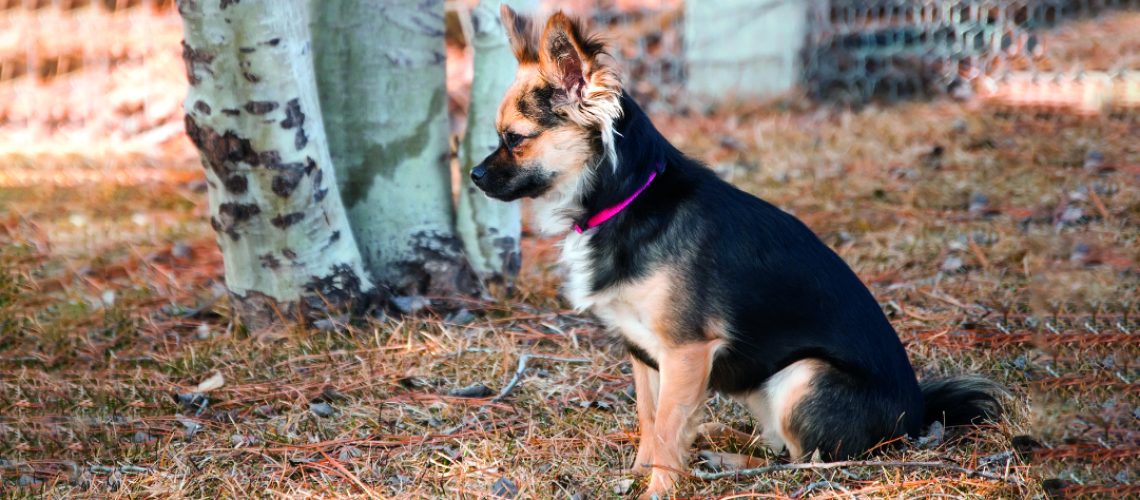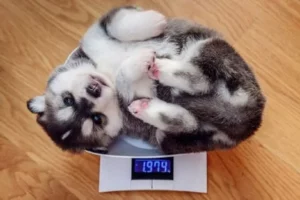A virus that affects the digestive system of puppies, dogs, and wild canids is the source of the deadly illness canine parvovirus type 2 (CPV-2) (e.g. foxes, wolves, coyotes). It was initially discovered in 1978 and is now widespread.
In young and unvaccinated dogs, canine parvovirus (CPV) is a highly contagious and often occurring cause of acute, infectious GI disease. The virus targets intestinal cells in dogs and prevents them from absorbing essential nutrients. A dog or puppy will consequently become very dehydrated and debilitated.
According to a study of the virus’ genetics, CPV-2 comes in several variations (CPV-2a, CPV-2b, and CPV-2c), yet they all cause identical symptoms in animals. The disease primarily affects puppies between the ages of six and twenty weeks, while it can occasionally afflict older animals as well. Myocarditis is an uncommon type of illness that can appear in newborn puppies (inflammation of the heart muscle).
In what ways could the dog become infected?
There are many places where dogs may encounter parvovirus, but not every dog infected with the virus will fall ill. The immune system of the dog and the number of viruses to which the dog is exposed are two elements that affect infection. A precise series of actions is started when the virus attacks the body if the circumstances are just perfect and a dog does become infected.
How is Canine Parvovirus Spread?
Parvovirus may spread by bodily fluids like dog feces and vomit. It is quite resilient and may live for at least six months and potentially much longer in the environment outside the body, such as in the grass in a park. Direct dog-to-dog contact, contact with infected settings or humans, as well as contact with excrement (stool), are all ways that CPV-2 is transmitted.
A certain amount of parvovirus-infected feces can act as a reservoir for the virus in the environment and spread it to other dogs that come into contact with them. CPV-2 can easily spread from location to location on dog hair or feet, as well as through contaminated cages, shoes, or other items. Infected dog handlers’ hands and clothing can also get contaminated by the virus, as well as kennel surfaces, food and water dishes, collars, and leashes. It can survive in the environment for a significant amount of time at least 18 months and is resistant to heat, cold, humidity, and dryness.
What Dogs Are at Risk?
All dogs are sensitive, but pups under four months old and animals who have not received the canine parvovirus vaccination, including those that have not received their booster shots, are more likely to contract the disease and become severely ill.
Puppies deteriorate rapidly as a result of the parvovirus symptoms that render them extremely frail and force their immune systems to work extremely hard to combat the illness.
What are some Signs of Parvovirus Infection?
It is common to refer to CPV-2-infected sick dogs as having “parvo.”
Clinical symptoms of parvoviral enteritis often appear 5-7 days after infection, however, this can vary from 2–14 days. Initial clinical symptoms, such as lethargy, appetite loss, fever, vomiting, and severe, frequently bloody diarrhea are all symptoms of CPV-2 infection. Most parvovirus fatalities happen 48 to 72 hours after the beginning of clinical indications because vomiting and diarrhea can quickly dehydrate a person. The moment your dog or puppy exhibits any of these symptoms, you should call your veterinarian.
How is Canine Parvovirus Diagnosed?
The history, physical examination, and laboratory tests of the dog are frequently used to make the CPV-2 infection suspicious. Testing of the stool can validate the diagnosis.
The deciding factor in a CPV diagnosis is frequently a realistic measurement of white blood cell count. A low white blood cell count may be indicative of CPV infection because the bone marrow is one of the first tissues the parvovirus infects. A very certain diagnosis of CPV can be made in dogs who have both a positive ELISA report and a low white blood cell count.
A test known as the polymerase chain reaction (PCR) may also be used by veterinarians to diagnose CPV in fecal samples. The CPV fecal PCR test finds microscopic particles of CPV-specific virus DNA in the stool of an infected dog.
Treatment: What therapeutic services are offered?
Treatment aims to support the dog’s body systems until the dog’s immune system can fight off the viral infection because there are no medications that can destroy the virus in affected dogs. The primary goals of treatment are to combat dehydration by restoring electrolyte and fluid losses, managing vomiting and diarrhea, and avoiding subsequent infections.
A veterinarian must treat parvovirus-infected dogs and puppies, who may also require hospitalization. To prevent dehydration, they will be placed on a drip and given intravenous fluids. Furthermore, medications that reduce vomiting may be used, which also helps to avoid dehydration.
It’s important to keep sick pets warm and provide them with expert nursing care. Even with rigorous treatment, a dog with parvo may not survive and treatment for it can be pretty expensive. Successful outcomes heavily depend on early detection and effective treatment.
As CPV-2 is highly contagious, isolation of affected dogs is essential to prevent infection from spreading. Controlling the spread of parvovirus requires thorough cleaning and disinfection of contaminated kennels and other locations where diseased dogs are (or have been) housed. For personalized answers on cleaning and disinfection solutions because the virus is difficult to eradicate, speak with your veterinarian.
How can Parvovirus be prevented?
Vaccination is crucial. Veterinarians typically deliver the CPV vaccine as part of a combination dose that also includes the distemper, canine adenovirus, and parainfluenza vaccines. These injections are given every 3 to 4 weeks from the time a puppy is 6 weeks old until he is at least 16 weeks old. A booster immunization is advised one year later, and then every three years thereafter.
Young puppies are especially vulnerable to infection because the natural immunity conferred by their mothers’ milk may wear off before the puppies’ immune systems are strong enough to combat infection. If a puppy is exposed to canine parvovirus during this period of vulnerability, he or she may become unwell.
Another issue to be concerned about is how immunity produced by mother’s milk may interfere with an appropriate response to vaccination. As a result, even vaccinated puppies might become infected with parvovirus and suffer sickness. A series of puppy vaccinations are given to reduce gaps in protection and provide the best protection against parvovirus during the first few months of life.
To secure their adult dogs, pet owners should ensure that their dog’s parvovirus vaccination is up to date. Inquire with your veterinarian about a suggested immunization program for your canine pet.




